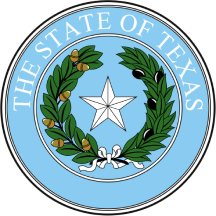Conservative Leader Pierre Poilievre will return to Parliament, this time as the new member for the Alberta riding of Battle River-Crowfoot.
With more than 80 per cent of the popular vote in a byelection, Poilievre has managed to pass the first significant test of his leadership following the Conservative Party’s federal election loss in April. The victory not only signals ongoing support from the riding’s voters but, more importantly, restores the legitimacy and platform that the Office of the Leader of the Official Opposition provides.
But the scope of this success should not be overstated. This victory isn’t a noteworthy accomplishment, nor does it indicate a comeback for the Conservatives. Rather, success here was the bare minimum; the start of a much longer journey back to prominence for the Conservatives.
Safest possible riding
Battle River-Crowfoot, which comprises a predominantly rural part of southeastern Alberta, is one of the safest seats for the Conservatives in the country. Although there are variations over time, a Conservative candidate within the last few decades could have, regardless of the particulars of the election period, expected at least 70 per of the vote. Just this year, the party’s candidate — Damien Kurek — won almost 83 per cent of the vote.
But although there has been little change in the riding over time, byelections can often produce novel, unpredictable and counterintuitive results. Unlike Canada-wide contests, local communities are subject to the near constant attention of parties, leaders and the national media.
Byelections also generally have smaller rates of voter turnout and engagement — it’s rare to see more than a third of them turn out. This means that short-term and localized dynamics can have a bigger impact on the results, especially if they can be mobilized.
In fact, minor parties and independent candidates perform generally better in byelections.
Were there any localized dynamics that could have hurt Poilievre? Apart from some reports of grumbling within the Conservative camp, media coverage focused on residents who expressed skepticism that Poilievre — having been an urban politician for the last two decades — was capable (let alone willing) to voice the specific needs of the community.
In fact, this byelection has come at a moment of rising separatist sentiment in Alberta.
Read more: What if Alberta really did vote to separate?
Voting for party over leader?
With all this said, though, none of it proved to matter in the results. No serious challenge to Poilievre really materialized, even with 216 other names on the ballot. Instead, by winning 80 per cent of the vote, the Conservative leader has accomplished what amounts to a typical result for the party.
Voters, it seems, did not turn out for Poilievre’s leadership in large numbers as much as they have maintained their support for the party. For now, that’s enough for Poilievre.
He’s shown his ability to mobilize support among voters, and now can turn to his next challenge of surviving the mandatory leadership review in January.
In the months following the federal election in April, the federal Conservatives have been at something of a standstill. Alongside the slow summer months and the soul-searching that follows every election defeat, the party has yet to determine how to adjust to Canada’s new political environment.
While Poilievre — who may or may not still be leader in a year — has focused on communities in Battle River-Crowfoot, the political centre of gravity has shifted to Prime Minister Mark Carney.
In his fifth month in the job, Carney maintains considerable public confidence, whether it comes to ongoing negotiations with the United States or in his expressed support for many of the policies that have been long promoted by the Poilievre Conservatives.
Historically, the Conservatives have quickly replaced their leaders. Poilievre’s predecessors, Andrew Scheer and Erin O’Toole — despite publicly expressing intentions to stay on — were quickly pushed out of their jobs following the formation of Liberal minority governments under Justin Trudeau.
The months ahead
What seems to make Poilievre’s situation different, though, is that no clear or popular successor has appeared, especially someone who can combine the support of party members, elites and unaffiliated voters in the same way he has. In the coming months, he will be able to use his platform in the House of Commons to make this point even more apparent.
No honeymoon lasts forever. Even while Carney now has the support of the Canadian public, there are several tensions and deep-seated challenges within his stated goals that are bound to lead to future problems.
Read more: Is Mark Carney turning his back on climate action?
The discontents Poilievre has managed to tap into have been, at best, temporally satiated in the wake of the byelection win. And Carney’s coalition remains a defensive one, consisting of just one cohort of Canadian voters who are divided in terms of age, region, education level and income. This is all part of a voter realignment that is increasingly shaping the country’s politics.
What remains unclear is what challenges Carney will face in the months ahead and how the Conservatives will pivot to take advantage of them.
Will the party, for instance, maintain the libertarian-flavoured populism of the last few years? Or will it, like its international peers, embrace a program that’s, among other things, more economically interventionist, pro-worker and concerned with national culture?
Already, the party has explored a more restrictive stance on immigration, has taken the side of striking Air Canada workers and offered substantive alternative to Carney’s “elbows up” nationalism.
We’ll have to wait until the leadership review in January to see.
This article is republished from The Conversation, a nonprofit, independent news organization bringing you facts and trustworthy analysis to help you make sense of our complex world. It was written by: Sam Routley, Western University
Read more:
- Why does Pierre Poilievre appeal to young Canadians? It’s all about economics
- Pierre Poilievre is a career politician: Is that good or bad?
- Pierre Poilievre is popular among union members. What’s it really all about?
Sam Routley does not work for, consult, own shares in or receive funding from any company or organisation that would benefit from this article, and has disclosed no relevant affiliations beyond their academic appointment.


 The Conversation
The Conversation
 America News
America News The Texas Tribune
The Texas Tribune Local News in Texas
Local News in Texas Local News in Maine
Local News in Maine Reuters US Top
Reuters US Top AlterNet
AlterNet Raw Story
Raw Story St. Louis Post-Dispatch
St. Louis Post-Dispatch Just Jared
Just Jared